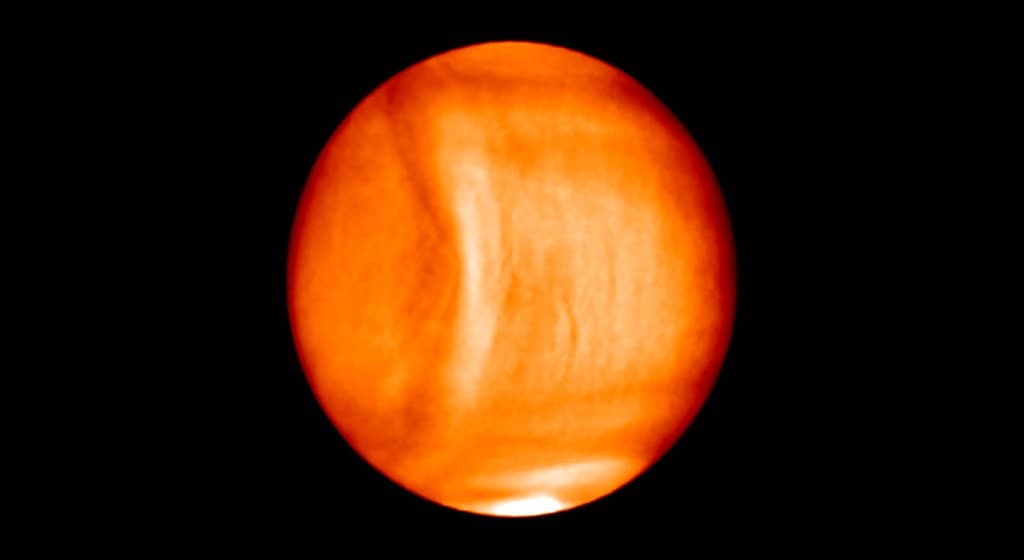Strange Space
The universe is full of strange occurrences. While some people speculate such things are due to the existence of extraterrestrial life — like that bizarre megastructure which still remains largely unexplained – others adopt more factual reasoning. Recently, another one of these mysterious space objects has been spotted on Venus.
The massive bow-shaped bulge was spotted on the surface of Venus by Japan's Akatsuki probe last December. The strange structure was located about 65 km (40 miles) above the surface, stretching about 10,000-km (6,214-miles). Moreover, it stayed eerily still as it dominated Venus' uber dense and hot atmosphere, withstanding the planet's legendary 359 km/h (223 mph) winds. The bulge disappeared immediately after being visible for four straight days.
Similar occurrences were previously captured by Europe’s Venus Express spacecraft during its 10-year mission. Now, the Akatsuki probe patiently lingers around Venus, waiting for the phenomenon to reappear.
Gravity Waves
Scientists are baffled by the phenomenon, but they do have a proposed explanation. In a study published in the journal Nature Geoscience, the Akatsuki team describes that this strange bulge may be evidence of a massive gravity wave (which are not the same as gravitational waves). Gravity waves occur when a fluid material (liquid, gas, or plasma) is disturbed out of a position of equilibrium. The bulge was able to withstand the sulfuric acid winds on the surface of Venus, something only a force like a massive gravity wave could do.
Venus, despite the crazy fast winds on its atmosphere, actually rotates painfully slow — slower than the amount of days it takes to complete its orbit. The scientists think that the winds, combined with the planet's towering mountain ranges, could've generated the gravity wave. The surface winds created the gravity wave when they pummeled into the Aphrodite Terra mountain range, a 4,500-meter (14,764 feet) high terrain near Venus' equator.
"We suppose that highlands are a key to generating the stationary gravity waves, because most of the bows - and we have found more than 15 bows so far - have appeared above the highlands at their centres," said Makoto Taguchi from Rikkyo University, speaking to Wired.
There is a problem though. Nobody's ever expected gravity waves to be generated at such a massive scale. Furthermore, it's not clear how gravity waves can rise so high above the surface of Venus. Still, the discovery of the bulge can help explain Venus' equally strange rotation occurs.
"We don’t entirely understand how the atmosphere comes to this super-rotating state, but gravity waves are one contributing factor," University of California, Los Angeles geophysicist Gerald Schubert told Wired. "The feature probably arising at least in part by gravity waves will tell us more about the role they play in the atmospheric dynamics."
Share This Article
